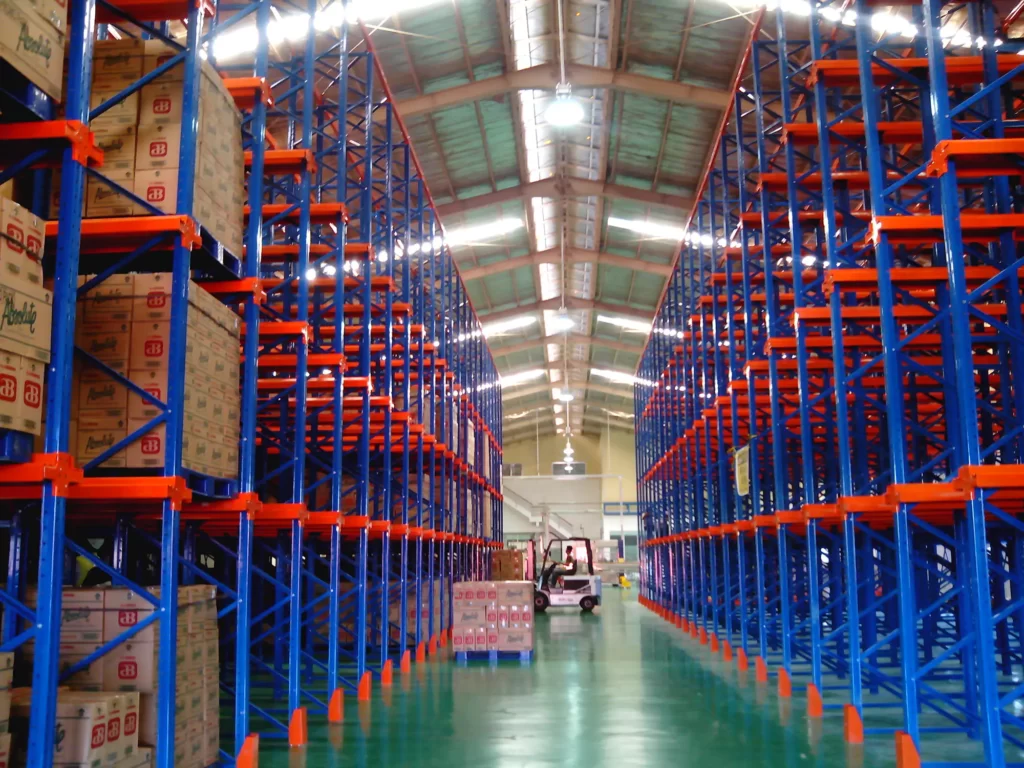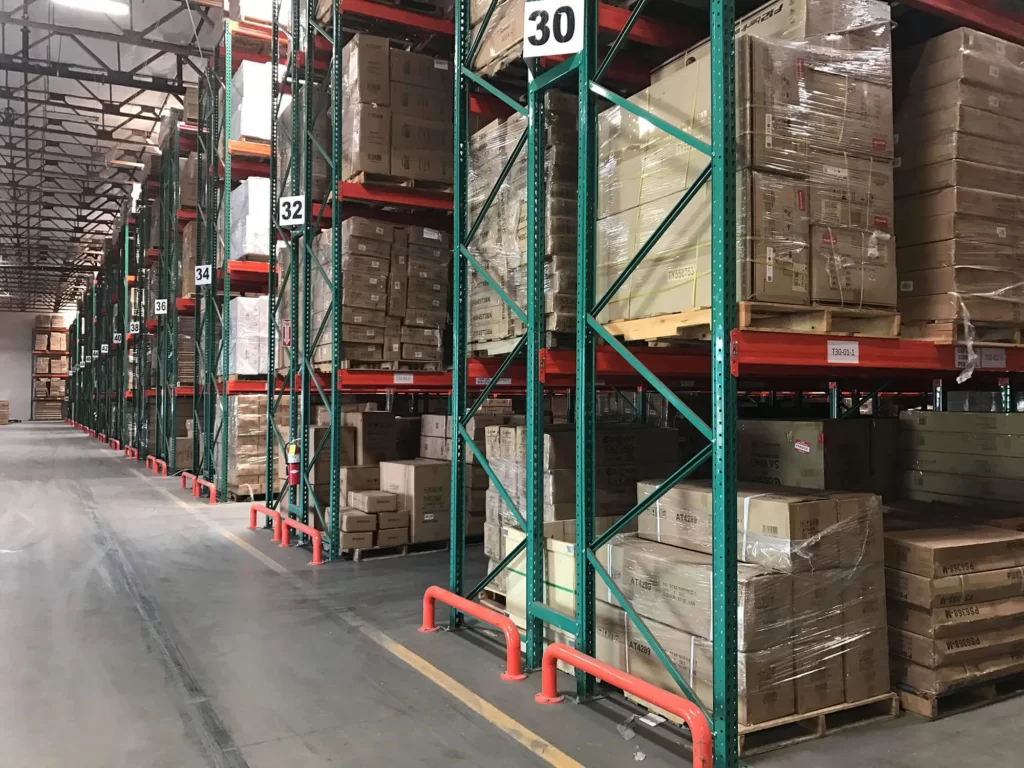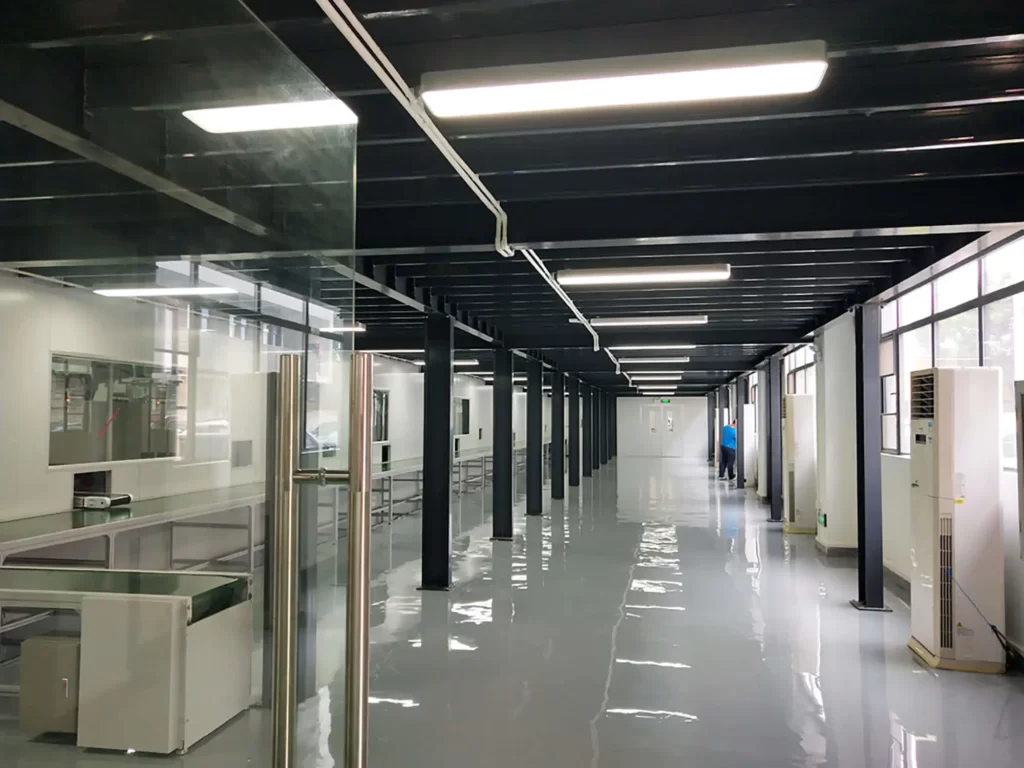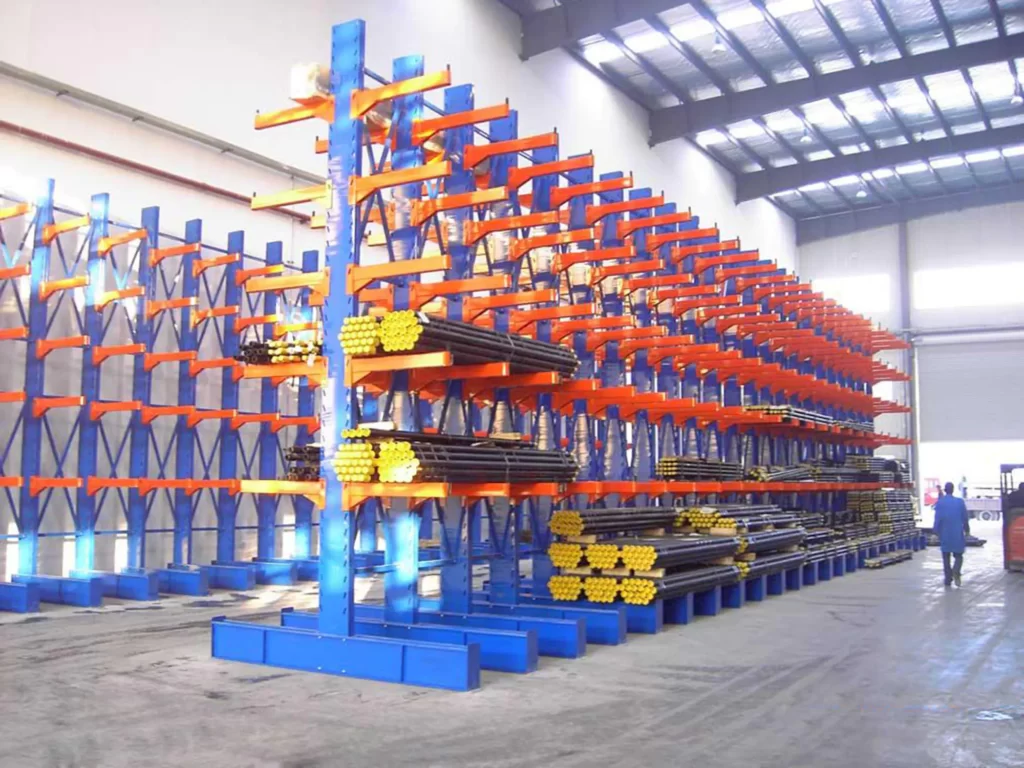The best warehouse racking systems can be a critical option when it comes to selecting The Best racking systems. A racking system in the warehouse is used to store items that can be taken out when they are needed. A racking system helps the warehouse team to better manage and utilize the space horizontally and vertically.
The warehouse racking system, basically, streamlines the operations that can save you many costs, and time, and provide better space utilization options. So, why not use such a beneficial storage solution which can profit your organization and help you to work efficiently and effectively?
Let’s know about the best warehouse racking systems that you can install in your organization’s warehouse. This article will help you to choose better options in racking systems before you do market research on your own.
So, let’s get started!
Best Warehouse Racking Systems List.
There is a wide variety for managers to choose the best racking system from. Inventory management has been made much easier than before. High-quality racking systems require feasible working prior to their purchase.
The best warehouse racking system widely depends on your requirements and needs. So, we have mentioned the best racking systems that you can choose for your warehouse.
1. Selective Pallet Racking System

A selective racking system is ideal for warehouses when the pallets per SKU are lower in number. Typically, selective pallet racking is made with metal shelving that is designed to fit pallets. You can add or remove stock in these pallets using a forklift. This racking system enables you to access your pallets directly without moving or messing with others.
This is the most common type of racking system; therefore, you might hear about this racking system more often. When you have a variety of items then go for this racking system because it is also a cost-effective racking system.
Selective pallet racking can take loads up to 1 to 3 tons. Also, you can use this racking system when you need to pick from lower-level pallets. The estimated budget per pallet ranges between $45 to $65. The floor utilization can be 40% and storage utilization is 90 to 95%. It follows the FIFO inventory management system.
The disadvantage of selective pallet racking is that you cannot use this racking system when you have lots of pallets per SKU. Also, if you have to pick items from more pallets then this racking system should not be used.
2. Double-Deep Racking System

A double deep racking system is the type that gives huge density with the addition of specialized warehouse equipment like extendable forks. It might require more time to operate. This racking system is the best among high-density racking systems and a selective racking system.
The budget you require for this racking system ranges between $50 to $70 per pallet. Where the floor utilization will be 60 % with the storage utilization ranging from 85 to 90 %. The double deep racking system uses forklifts with extendable forks. A camera installed in the forklift helps to assist the operator which makes the tasks much easier.
A double deep racking system is best suited for the items of the same SKU. This racking system is installed when you have a greater number of pallets per SKU. Also, it supports higher storage density.
It uses the First In, Last Out (LIFO) inventory management system. Generally, the two pallets of the same SKU are adjusted in each slot of this racking system.
This racking system has a disadvantage that states that it should not be used for order picking needed from the pallets. And when you have a large number of SKUs available that needs to be stored but with single pallets in stock.
3. Drive-In Racking System

Drive-in racking is a storage system used in warehouses and distribution centers. It allows forklifts to drive directly into the racking to load and retrieve pallets. This system is good for storing large quantities of the same product that are used less often.
Drive-in racking saves space because it requires less aisle space than other types of racking. This means more pallets can be stored in the same amount of floor space. It can also reduce the number of forklifts needed to operate the warehouse. This way you can save businesses money.
You will be needing a budget of $160 to $185 per pallet. The floor utilization is 65% whereas the storage utilization is 60 to 65%. This racking system uses a Last In, First Out (LIFO) inventory management system.
However, there are some risks with this type of racking. Forklifts can cause damage to the racking and pallets. Also, some pallets may be harder to reach. But worry not! With good planning and maintenance, drive-in pallet racking can be a good storage solution for businesses.
4. Push-Back Pallet Racking System

A push-back racking system is used for saving more space. It basically offers high storage density which allows up to four pallets to be stored on each level. This way it creates separate lanes for each SKU. So, you can easily locate items, pick them, and put them away when needed.
You don’t need multiple aisles for the push-back racking system because the loading and unloading are done from the front. This system uses forklifts to load and retrieve items from the racks. The forklifts push the pallet back from the aisle. But remember to train the drivers of forklifts for loading and unloading items. So that, damage can be avoided and there might be less damage with more
Now, moving toward the budget, you will be needing $275 to $295 per pallet for this racking system. The floor utilization is 75% whereas, storage utilization is also 75%. This racking system uses a Last In, First Out (LIFO) inventory management system.
5. Cantilever Racking System
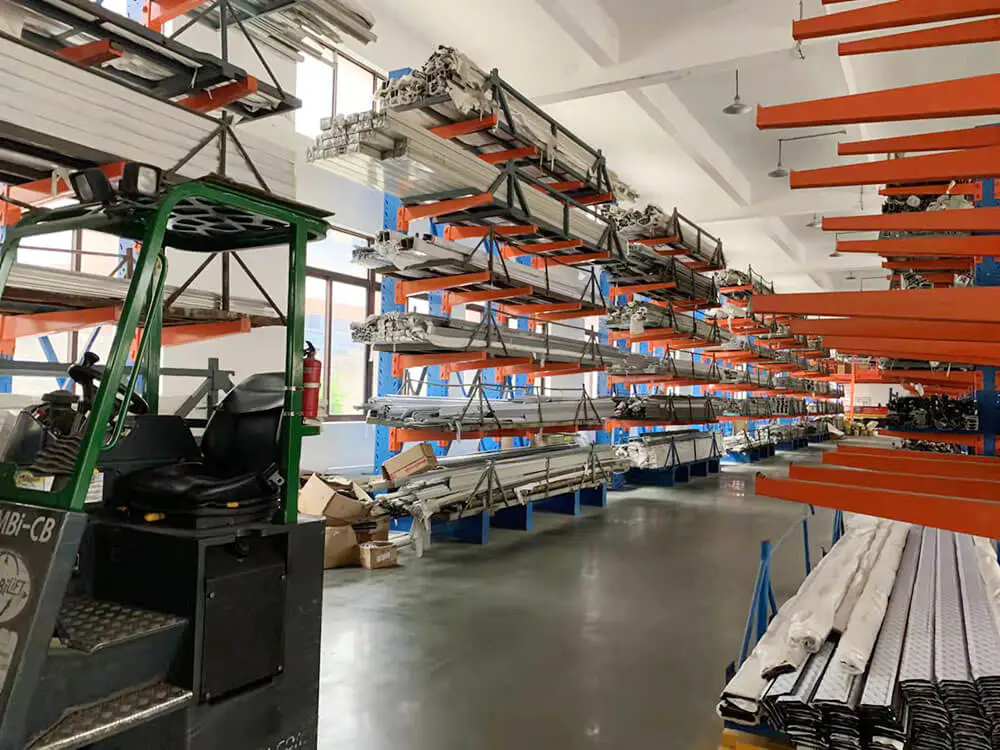
A cantilever racking system is a storage solution for industries where long and bulky items are stored. These items include pipes, lumber, furniture, tubes, fabric rolls, and sheet metal. This racking is best for extra heavy-duty items which consist of load-bearing arms and are tailored with a steel column. It allows direct pick of items and easy access made possible to save time and energy.
As this racking system provides storage for odd-shaped and lengthy items, you can store light-duty and heavy-duty items in this racking system. This racking system is widely used for earthquake resistance applications. There is more space available because of the center column design. This racking system is fully customizable so that you can custom order as per your requirements.
The key features of the cantilever racking system are the easy arm adjustment. It provides easy accessibility to the products so your operations don’t take too long to retrieve the products. It also provides a wide range of loading capabilities. The benefit of cantilever racking is that it is easy to deconstruct when needed and it can be reconfigured as per need.
Just like others, the cantilever racking system has its own shortcomings. It is high in cost as compared to other storage solutions in the industry. Also, this racking system doesn’t support palletized inventory solutions. When installing this racking system, it will require a lot of floor space because they widely use horizontal space.
6. Mezzanine Racking System
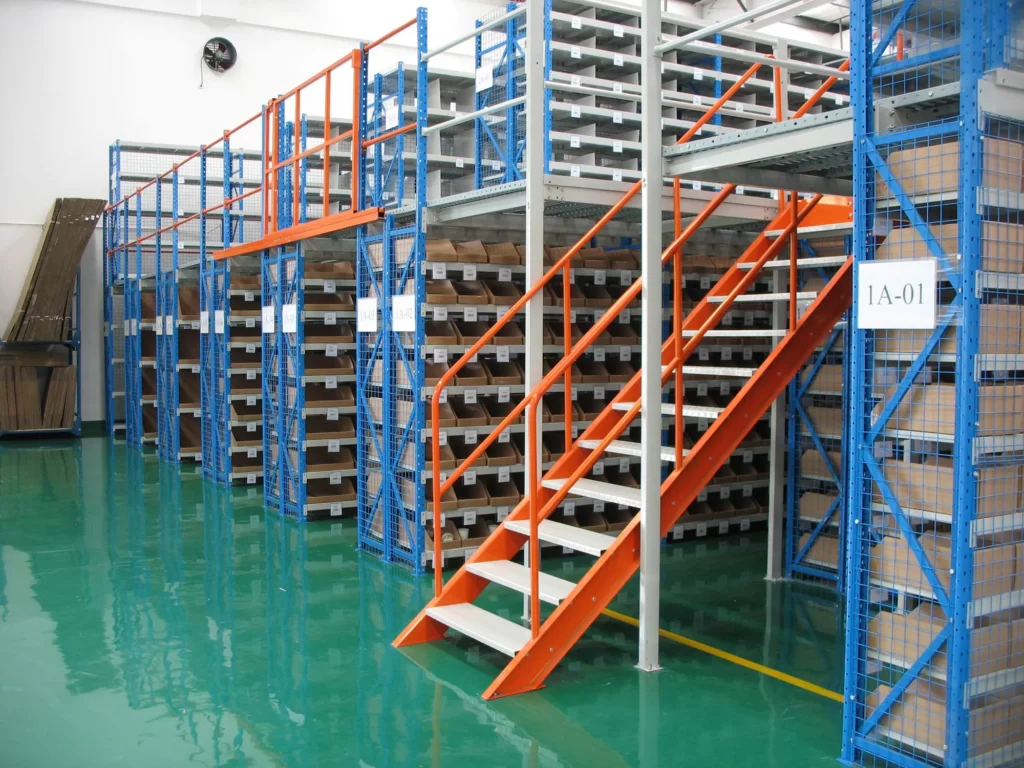
The mezzanine racking system is yet another storage solution that uses the warehouse storage space rationally. It covers the storage capacity to its fullest according to the height of the warehouse.
A mezzanine racking system comes in a fully assembled form but it can be disassembled when needed. Also, it can easily be assembled flexibly as per the requirement of two-layers to multi-layer shelves. This racking system is best suited to store items in small quantities. This racking system is strong and stable. Also, it can bear strong capacity.
The mezzanine racking system has a fast turnover speed. You can easily pick up and retrieve goods in this storage solution. It helps to enhance warehouse space which means a storage utilization of 80% can be achieved. It improves operations efficiency and provides better results for the smooth handling of stored items.
The biggest advantage of the mezzanine racking system is that you don’t require to spend extra on rent, building, or purchasing new space. This saves you additional costs of taxes as well.
Variables to Consider While Choosing Racking System for Warehouse.
Every warehouse has its own unique standards. But worry not! Because there are factors or variables that you must consider while you go for racking systems. The following are the variables that can be considered when you pick a racking system that best suits your warehouse:
Floor Utilization
An ideal racking system is one that provides you with more storage area in less space. This can be done while maintaining a balance between putting things and retrieving them with ease. Good floor utilization helps in minimizing the disruption in your daily warehouse activities.
A perfect racking system is one that provides you with a storage solution that increases your efficiency while keeping all the activities ongoing. So, you can calculate your warehouse floor space with this simple process. First of all, calculate the size and shape of your warehouse. Now all you have to do is to measure the total area of the warehouse from which you will subtract the occupied space. For example, your office space area, restroom space, and any other space that is not helpful with storing items. Now find the product of this number and the height of the building. This way you will get storage capacity in cubic feet.
Now determine your utilization by calculating the space your products are taking up in the warehouse. For this, you need to add up the total amount of space that each product occupies. The value you get should be divided by the amount of space your warehouse can hold (maximum). This figure will better help you to know if you are utilizing your warehouse efficiently or not.
You can calculate the floor utilization in more detail to know the exact percentage you are utilizing and install your racking system accordingly.
Storage Utilization
Storage utilization is the capacity available in the racking system that you can fully utilize. To determine storage utilization, you need to calculate the size, volume, and weight of the shipment being stored in the racks. Businesses can have a significant impact on their effectiveness when storage space is utilized thoughtfully. Because this way workers can fulfill their orders faster and timely delivery is made possible.
To calculate the cubic size of your inventory, you need to find out the size of all the shelves that are used to store items in your warehouse. Now calculate the amount of stuff or items each shelf can hold when the items are stored vertically. Multiply this number by the number of shelves you have to know about the total amount of items you can store in your warehouse space capacity.
Inventory Management
When inventory is properly managed and the stock items are placed as per the requirement of retrieval then the company gets definite results. It helps to boost productivity in overall operations but mainly logistic operations are greatly affected by good or bad inventory management. Also, a properly managed inventory eliminates cost overruns.
There are many ways in which you can calculate your inventory management. The inventory control can be measured through lead time, safety stock, stockout, reorder point, maximum stock level, economic order quantity, and stock turnover rate.
The managers in logistics make sure to get full use of the formulas that these inventory control parameters can provide. Other than these formulas, now warehouse management can use software that helps you to better manage inventory. Because it automates tasks, and the information is digitized which as a whole allows management to get the best strategic decisions for their warehouse.
Budget
There are different costs for different racking systems. As they vary in price, your budget will have a different impact on your quarterly costs. But if the ideal racking system is installed, keeping all the requirements in mind, then you will get benefits in the long term.
High-end racking systems provide better workflow in operations and which as a result enhances the company’s efficiency. In general, you get what you pay for! This rule goes for budgeting for the warehouse racking systems.
In this article, we have described in detail the different warehouse racking systems. So, you can differentiate between them in terms of costs and features.
Versatility
Versatility is the biggest benefit of installing the racking system in your warehouse. Because customization as per your requirements allows all the items to be stored in it. It also saves space because you can store items vertically and horizontally both ways.
Easy access to items, unique designs, and custom-made racks, and durability with increased storage capacity are the key advantages you can get from it. Racking systems are designed based on the climate of the items to be stored and the forklifts. The height of the rack and the aisle size must be considered while making a racking system.
Forklift Accessibility
An essential need for your warehouse is the forklifts that streamline your logistics operations smoothly. The factor for a forklift is basically the layout design of the racking system or warehouse that includes the width and height of the aisles.
Forklifts should be easily accessible. They must be parked in the proper area where they can be reached quickly when needed. Also, the operations should not be affected by the forklifts. Like they should not be a hurdle between anything.
There is a variety of forklifts that can be used to serve certain purposes. The type of forklift you should own depends upon the type of product you have. There is a forklift for heavy-duty items, automated guided vehicles, order pickers, side loaders, narrow aisle forklifts, and many more. Choose according to your warehouse use and product features.
Conclusion
In answer to the question “What is the best warehouse racking system”, I can tell you clearly that there is no best warehouse racking system, only the most suitable warehouse racking system. You need to choose the right racking system according to your actual storage needs and budget. It is worth noting that selective pallet racking is a good choice both in terms of cost and storage utilization.
Wisely choosing between the right racking system can help you achieve significant results. A right-racking system improves logistics operations which ultimately improves the company’s efficiency and effectiveness. All you have to do is to calculate your warehouse storage space and then install the racking system that you think is best according to your product’s requirements. Analyze your budget, manage your inventory techniques, and plan how much space you will be requiring as the storage facility. Go through the detailed knowledge about each racking system and make a wise decision in choosing the right racking system. Because this will be the future of your organization!




